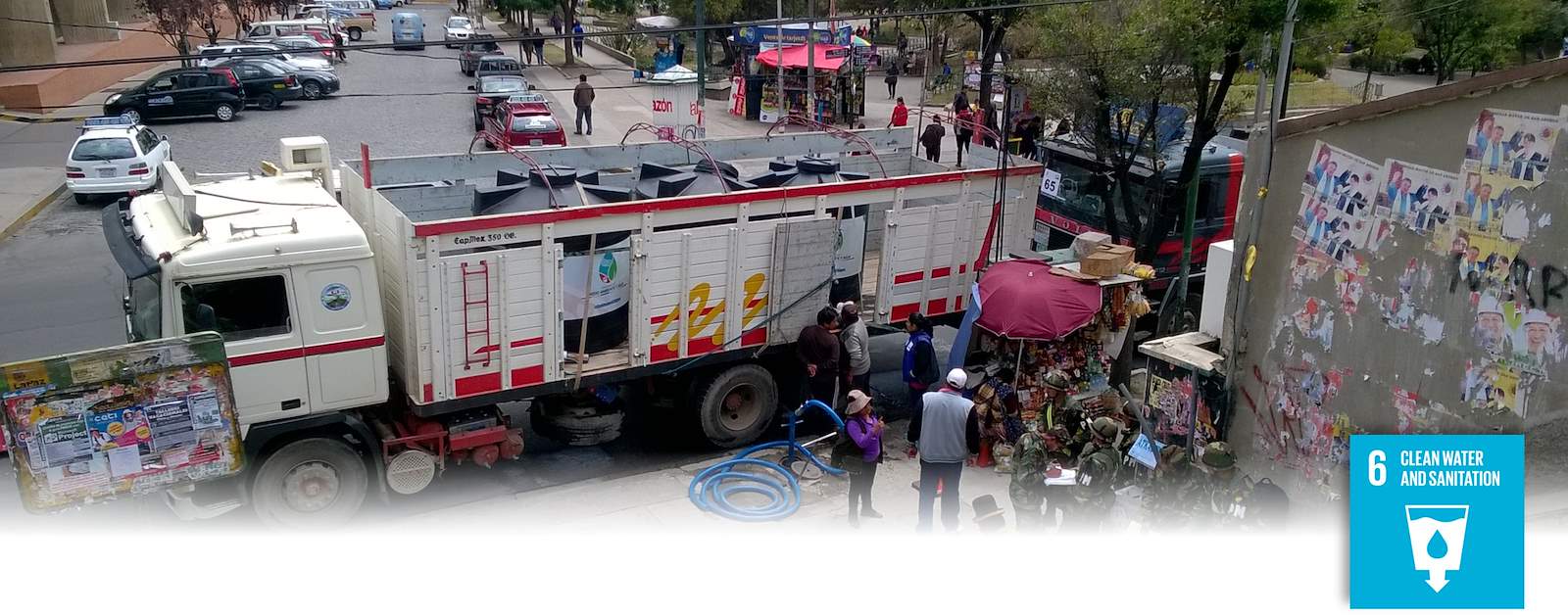Optimisation strategy avoids Day Zero without new reservoirs

Avoiding Day Zero in La Paz, Bolivia
Changes in weather patterns connected to climate change are bringing periods of sustained drought which put the availability of public water at threat. For example, in 2016 the capital of Bolivia, La Paz, experienced Day Zero when drinking water reserves were almost depleted due to extreme drought. Schools were closed and drinking water brought in by army trucks. A national state of emergency was declared. However building new dams and reservoirs to expand supply creates significant impact on ecosystems, social impact, significant investments and long implementation durations. Is there another way?
We developed a solution which optimises the existing network of 25 dams and reservoirs and avoids the need to expand the current water system. We have created a semi-online monitoring network powered by solar panels to replace in-person reporting from across the Andes. Data from this monitoring system is linked via smart software to an advanced hydrological model that we have built. The model uses this data as well as weather forecast information to generate possible scenarios. It can provide future Day Zero predictions with around 18 months’ notice, providing enough time to prepare adaptive measures and mitigations.
Operational optimisations reduce spillage and evaporation equivalent to introducing a new dam and reservoir. The system also reduces contamination and chemicals needed to purify the drinking water. The impact of these optimisations mean the investments will have paid for themselves within four years. Furthermore, the water system operations will be more robust, preventing supply interruptions to the city of 2.2 million people, and reducing chances of Day Zero from once every four years to once every 10 years. Even when shortages are predicted, sufficient time is provided to allow adaptive measures to be introduced.